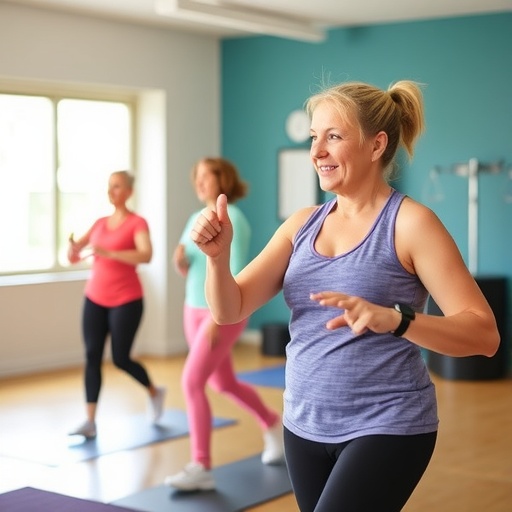Credit: Tadd Truscott, Rafsan Rabbi and Nathan Speir
WASHINGTON, D.C., November 20, 2018 — When professional divers jump from a springboard, their hands are perpendicular to the water, with wrists pointed upward, as they continue toward their plunge at 30 mph.
As they complete what's known as a rip dive, their hands remove water in front of the body, creating a cavity that reduces the initial impact force. The rest of the body, from head to toe, is aligned to shoot through the same cavity created by the hands.
Using the hands to create cavities in the water's surface is similar to the concept behind the fluid-structure studies that researchers at Utah State University are conducting using spheres.
Utah State researcher Rafsan Rabbi will present his team's research at the American Physical Society's Division of Fluid Dynamics 71st Annual Meeting, which will take place Nov. 18-20 at the Georgia World Congress Center in Atlanta, Georgia.
In one study, two consecutive spheres falling into a water tank were tested. The first sphere dropped into the water to create the cavity was made of steel. Five different sizes were used. The diameters ranged from 10 millimeters to 38 millimeters, but they were always smaller than the second sphere.
The second sphere, which went through the cavity, was made from 3D-printed Vero plastic. These spheres had a fixed diameter of 50 mm (or about 2 inches). Attached to each of these plastic objects was an accelerometer.
The researchers investigated how much acceleration the plastic spheres experienced as they went through the cavity created by the first steel spheres and calculated the force reductions from that. They found that the impact force of the plastic spheres was reduced by the steel ones by 40-60 percent.
"We have found that this 'free surface preparation' phenomenon can have a huge impact in reducing the initial high-impact force any object experiences while falling into a body of water," Rabbi said.
The research could have practical applications, such as lessening the blow of rockets landing unintentionally into the ocean.
A second study used Worthington jets instead of cavities to reduce the impact force. Such a jet results from a cavity collapsing on itself. The spacing between the two spheres were fixed in such a way that after the cavity collapses, the second sphere falls through the jet.
"This also reduced the impact force dramatically by up to 60 percent," said Tadd Truscott, director of the Splash Lab at Utah State who heads the research team. "Our studies show that prior preparations to the surface create a disturbance in the water surface to help cushion the impact of any falling object."
###
Presentation M05.2, "Surviving a cliff jump: go second" by Rafsan Rabbi, Nathan B. Speirs, Jesse L. Belden and Tadd T. Truscott, will be Tuesday, Nov. 20, 8:13 a.m. in Room B207 of the Georgia World Congress Center in Atlanta. Abstract: http://meetings.aps.org/Meeting/DFD18/Session/M05.2
MORE MEETING INFORMATION
USEFUL LINKS
Main meeting website: https://www.apsdfd2018.org/
Meeting technical program: http://meetings.aps.org/Meeting/DFD18/SessionIndex2
Invited talks: http://meetings.aps.org/Meeting/DFD18/APS_Invited
Hotel information: https://www.apsdfd2018.org/hotels/
GALLERY OF FLUID DYNAMICS
At the Annual Meeting, The Gallery of Fluid Motion will consist of posters and videos submitted by attendees illustrating the science and beauty of fluid motion. More information can be found here: https://gfm.aps.org/.
PRESS REGISTRATION
We will grant free registration to credentialed journalists and professional freelance journalists. If you are a reporter and would like to attend, contact Rhys Leahy or the AIP Media Line ([email protected]">[email protected]">[email protected]">[email protected], 301-209-3090). We can also help with setting up interviews and obtaining images, sound clips or background information.
LIVE MEDIA WEBCAST
A press briefing featuring a selection of newsworthy research will be webcast live from the conference Monday, Nov. 19. Times and topics to be announced. Members of the media should register in advance at http://apswebcasting.com/webcast/registration/aps1118.php.
ABOUT DFD
The Division of Fluid Dynamics of the American Physical Society, established in 1947, exists for the advancement and diffusion of knowledge of the physics of fluids with special emphasis on the dynamical theories of the liquid, plastic and gaseous states of matter under all conditions of temperature and pressure. For more information about DFD, visit https://www.aps.org/units/dfd/.
ABOUT APS
The American Physical Society (APS) is a nonprofit membership organization working to advance and diffuse the knowledge of physics through its outstanding research journals, scientific meetings, and education, outreach, advocacy, and international activities. APS represents over 55,000 members, including physicists in academia, national laboratories, and industry in the United States and throughout the world. For more information about APS, visit https://www.aps.org/.
Media Contact
Rhys Leahy
[email protected]
301-209-3090
@APSphysics
http://www.aps.org




